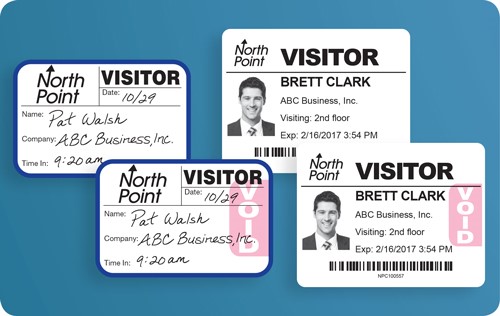Blog
6 hospital visitor management techniques to keep your facility secure
by Paul Kazlauskas

Hospitals across the country utilize visitor management solutions to enhance their sign-in processes. As more and more hospitals report violent incidents, healthcare facilities must put procedures in place that protect their patients and employees. When creating a visitor management plan, how do you know how to correctly implement things like new security protocols and new technology? Here are six visitor management “best practices” to help keep your healthcare facility as secure as it can be.
1) Document all entrances and develop a plan for how to secure them
Every entrance of a hospital should be documented. The Security Department needs to be aware of every door to the outside and have a plan for how to secure those. The plan could include physical barriers to entrances, such as locks or other access control tools. They could also include guards or reception areas that are designed to document the people who pass through. If a guard or receptionist isn’t available, using self-registration kiosks at your unmanned entrances provides a streamlined way to manage visitor entry.
Whatever your strategy for each entrance, have a plan for what to do with every visitor, contractor, vendor, volunteer, or other type of guest that enters a hospital.
2) Implement a comprehensive visitor management system
Visitor management systems (VMS) allow hospitals to effectively identify who has entered the facility, determine if their visit is authorized, and deny entry to individuals if necessary. Manual visitor management systems may have legibility, confidentiality, and efficiency issues; these can be overcome with an all-inclusive electronic system.
The VMS should not be obtrusive or cumbersome. It shouldn’t take any more than 20 seconds to complete the check-in and badging process. In addition to scanning the visitor’s driver’s license information and image, your facility should be able to capture a variety of additional data in the system. This information should include who the guest is visiting, the length of time they expect to be in the facility and, if the guest is a vendor, his or her company affiliation.
3) Require that all guests wear a visitor badge
When visitors come into your healthcare facility, they should be processed using a visitor management system. Whether the visitor management system is electronic or manual, the visitor should be issued a visitor badge to wear while at your facility. The visitor badge and its accessories are great places to add details about your security protocol. For example, the visitor badge could have a Visitor Agreement message printed on it that serves as a waiver of liability and/or confidentiality agreement.
Another area to consider is how to treat long-term visitors. Many hospitals have created long-term, durable visitor badges for family members who will be visiting a patient frequently over a period of time. This simplifies guest sign-in and check-out. By using a barcode on the visitor badges, these guests can be checked in and out with a simple scan.
4) Explain the sign-in process to visitors and educate your staff on procedures
Communication is critical to any security plan. Many healthcare facilities don’t tell visitors and employees what is expected of them.
Visitors need to know that upon arrival. Having clear signage helps direct people to where they will be registered. If the visitor is expected to self-register, they should have visible printed instructions, and the visitor management tool should be easy to use.
For hospital staff, a comprehensive training plan (with periodic follow-ups) should be in place. Staff should know how to use the visitor management system, as well as what to do if a visitor appears on a watch list or in an area of the hospital they don’t belong in.
5) Use watch lists to screen guests
Violence in hospitals has been increasing over the years. Tensions between patients, visitors, and hospital staff are higher than ever before. Plus, hospitals face growing concerns over unwanted and uninvited guests.
So, it has become necessary to screen visitors to ensure the safety of everyone in the hospital. In addition to screening against sex offender, terrorist, and other watch lists, your hospital should assess its individual security needs. The addition of custom watch lists are a great way to keep tabs on visitors who have a history of violence and ex-employees who should no longer be allowed to access the facility. Visitor management systems can automatically alert the lobby attendants to any visitor on the list within seconds of check-in. properly screening your visitors before they get past the lobby is an important step to better security.
6) Visitor data mining allows you to communicate better
Tracking visitors and collecting information about their travels within your facility gives you insight into your hospital’s activity and lets you increase patient and visitor communication. Some examples include looking at visitor trends to identify busy times so you are staffed properly, knowing your regular patients and visitors, and detecting patients who haven’t received visitors (perhaps volunteers could drop in on those people). You can also improve your communication with patients and visitors by sending them timely notifications and surveys.
What other visitor management techniques and policies should hospitals implement to help their facility be as secure as it can be? Please join the conversation below by adding your thoughts in the “Comments” area.
Want the latest, best security practices delivered straight to your inbox? Click the "Subscribe to the Blog" button (on the left side navigation).
Our visitor badges “VOID” overnight to prevent reuse. 
See them for yourself — request free samples!
Posted on 9/20/2018



 Paul Kazlauskas
Paul Kazlauskas
 Andrew Jones
Andrew Jones